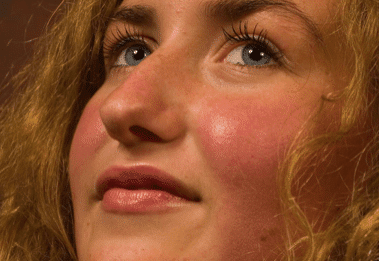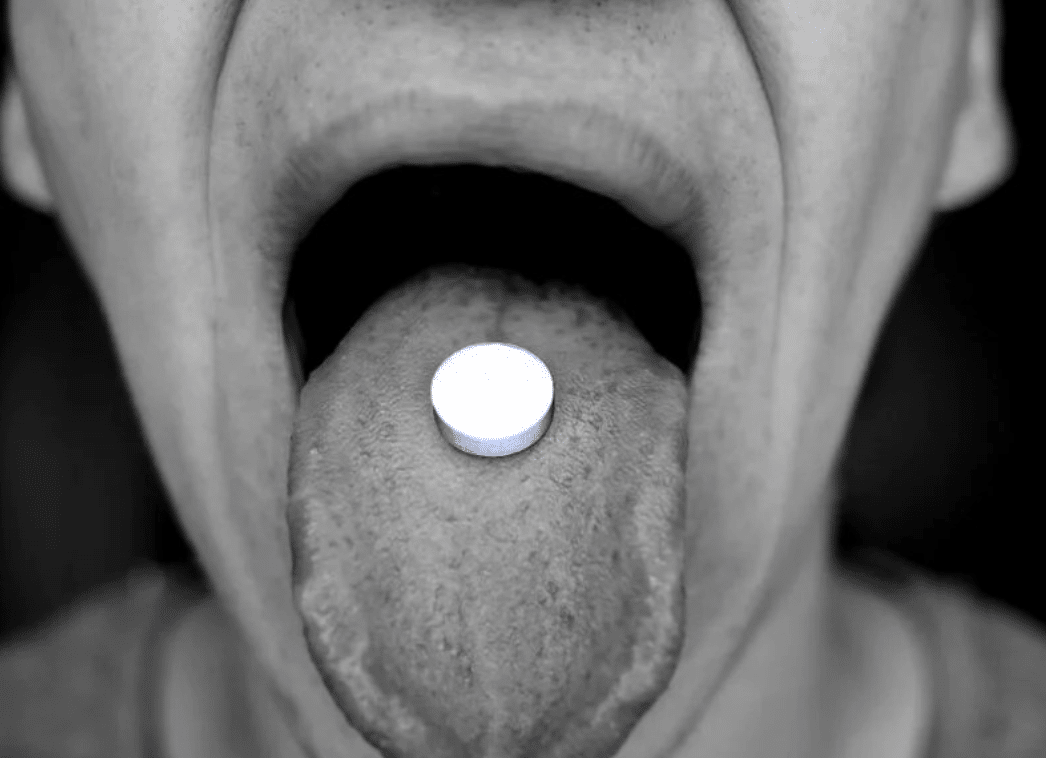Flushed skin occurs when the hundreds of tiny blood vessels just beneath the skin dilate, or widen. When these blood vessels expand, they rapidly fill with more blood, which can make the skin appear red or pink.
This effect is more noticeable in regions of the body where the blood vessels are closest to the skin, such as the cheeks and chest. Flushed skin may also feel hot to the touch or cause a slight burning sensation.
Flushed skin is usually harmless and short-lived, but it is important to be aware of any other symptoms that may accompany flushing.
The most common causes of flushed skin include:
Being anxious or embarrassed can cause the body to release hormones, such as adrenaline, that temporarily dilate the blood vessels and lead to reddening of the skin.
People often refer to this type of flushed skin as blushing.
Some people find blushing embarrassing or unpleasant, which can cause further anxiety that makes the blushing worse.
Heat
When a person becomes too hot, it causes the blood vessels to widen in an attempt to cool down the body. This response can also cause flushed skin. Exercise, intensive physical activity, or sudden changes in temperature can all have this result.
Redness that results from exercise or being in a hot environment is usually not a cause for concern. However, people who are feeling too hot should ensure that they drink some water and focus on taking deep breaths.
Flushed skin that occurs with other symptoms, such as difficulty breathing, exhaustion, or confusion, can be a sign of a heat-related illness, such as heat exhaustion or heatstroke.
Learn more about heat exhaustion and heatstroke here.
Alcohol
Alcohol raises blood pressure and causes the blood vessels to expand, which can cause flushed skin. The more alcohol a person consumes, the more likely they are to notice their skin turning red. Flushed skin after drinking alcohol is not usually a cause for concern.
Medications
Certain medications can cause flushed skin as a side effect in some people. These drugs may include:
- some antibiotics
- calcium-channel blockers
- vasodilators
- nitrates
- nicotinic acid
- tamoxifen
- thyroid-releasing hormone
- opioids, such as morphine
If a person is concerned about flushed skin that results from taking a particular medication, a doctor may be able to recommend an alternative drug.
Rosacea
Rosacea commonly affects the face.
Rosacea is a long-term skin condition that usually occurs on the face and can cause redness, pimples, visible blood vessels, and other skin problems. Rosacea often begins with flushing, and each bout of flushing may last a little longer than the previous one.
The cause of rosacea is not clear. However, in some people, certain factors can trigger a flare-up of symptoms. Common triggers include:
- stress
- sun exposure
- hot or cold temperatures
- specific foods or drinks
- certain medications
With treatment, which may include topical medications and oral antibiotics, people can usually keep the symptoms of rosacea under control.
Learn more about rosacea here.
Menopause
Menopause is when a person permanently stops having their period. In people going through menopause, changing hormone levels can affect blood flow and cause bouts of flushing that are known as hot flashes. During a hot flash, a person may experience a sudden, intense feeling of heat that can spread throughout the body.
Anyone who is concerned by their menopause symptoms should speak to a doctor, who can provide advice about different treatment options.
Learn more about treatment for menopausal hot flashes here.
Carcinoid syndrome
Carcinoid syndrome is a rare condition that can cause flushed skin on the face and chest.
Carcinoid syndrome occurs in around 10 percent of people with a carcinoid tumor. A carcinoid tumor is an uncommon type of cancer that usually starts in the digestive tract but can spread to other parts of the body, including the liver, pancreas, and lungs.
Carcinoid tumors produce hormone-like substances, such as serotonin, that can sometimes lead to the development of carcinoid syndrome. Other symptoms of these tumors and carcinoid syndrome can include abdominal pain, diarrhea, and trouble breathing.
Thyroid cancer
Thyroid cancer can change the behavior of the thyroid gland, which can affect hormone production and may cause flushing. Medullary thyroid carcinoma is the type of thyroid cancer that is most likely to cause flushing, but it accounts for just 4 percent of thyroid cancers.
Learn more about medullary thyroid carcinoma here.
Endocrine disorders
Flushing is a potential symptom of endocrine disorders.
The endocrine system comprises glands that produce hormones, which are chemical messengers that send information from one area of the body to another. These hormones travel through the bloodstream and help regulate a range of bodily functions.
When the body produces too much or too little of a hormone, this disrupts its internal communication. Several endocrine disorders cause these hormonal changes, which can lead to a wide range of symptoms.
Any endocrine disorder that produces high levels of the hormones that affect stress, blood pressure, or blood vessel widening may cause flushing.
For example, Cushing’s syndrome causes the body to produce too much cortisol, which can cause weight gain around the chest and stomach, diabetes, heart health problems, and flushing.
Learn more about Cushing’s syndrome here.
Prevention tips
Flushed skin is not always easy to prevent, but doing the following might help:
- avoiding extreme temperatures and dressing appropriately for the weather
- drinking plenty of fluids to prevent overheating and dehydration
- maintaining a healthy weight and blood pressure by exercising regularly and eating a healthful, balanced diet
- limiting alcohol intake
- learning relaxation techniques, such as breathing exercises, mindfulness, and meditation, for coping with stress
- treating any underlying medical condition that may cause flushed skin
For flushed skin that relates to stress, anxiety, or emotional responses, a medical professional can advise on therapies and techniques that may help.
When to see a doctor
Flushed skin is usually harmless, but it can sometimes be a sign of an underlying condition. It is best to see a doctor if the flushing:
- is becoming more frequent or getting worse
- does not seem to relate to heat, exercise, or emotional responses
- occurs alongside other unexplained symptoms, such as diarrhea or a racing heart
- is causing significant embarrassment, stress, or anxiety
Takeaway
Flushed skin occurs when the blood vessels just below the skin widen and fill with more blood.
For most people, occasional flushing is normal and can result from being too hot, exercising, or emotional responses. Flushed skin can also be a side effect of drinking alcohol or taking certain medications.
Sometimes, flushing can be a sign of an underlying medical condition, such as rosacea, cancer, or an endocrine disorder. People who have flushing that seems to be getting worse, occurs alongside other symptoms, or has no apparent cause should visit a doctor.
How many pounds have you lost this month? At Dieta Efectiva you can lose 10-12 lbs your first week and 2-5 lbs every week after. Visit us dietaefectiva.netto learn more about our program.







